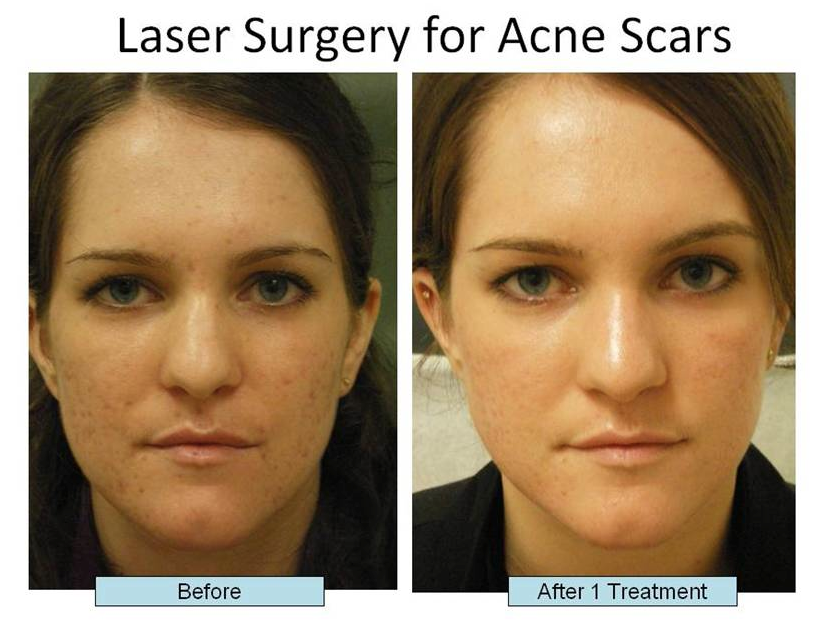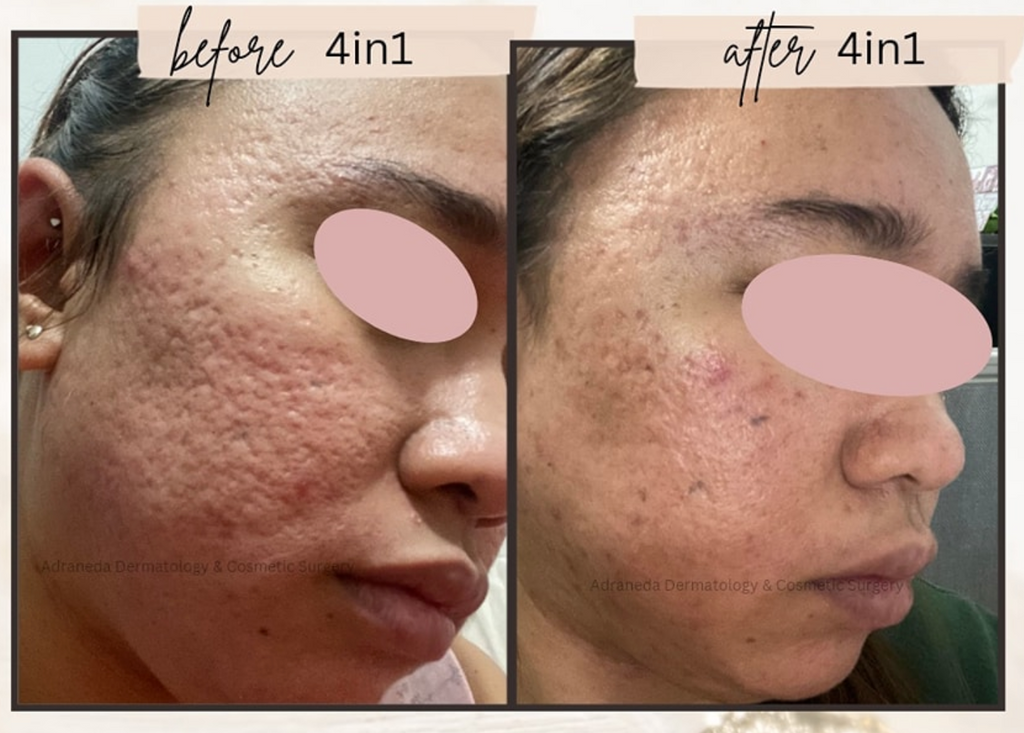Comprehensive Acne and Acne Scars Treatment: Achieve a Perfect Skin
Comprehensive Acne and Acne Scars Treatment: Achieve a Perfect Skin
Blog Article
Comprehending the Numerous Skin Disease and Effective Treatment Options for Acne Scars
Acne scars represent a complicated interplay of skin problems that significantly impact individuals' self-esteem and overall skin health. Understanding the distinct sorts of acne marks-- hypertrophic and atrophic-- along with their underlying reasons, is pivotal for determining effective therapy approaches. Numerous healing choices exist, ranging from advanced dermatological procedures to natural solutions. The efficiency of these treatments often hinges on personalized assessments by certified experts. As we explore the landscape of acne scar management, it comes to be evident that the trip towards clearer skin might entail greater than just topical options.
Kinds of Acne Scars
The two key categories of acne marks are hypertrophic and atrophic scars. These scars are further identified into 3 subtypes: ice pick scars, which are slim and deep; boxcar scars, which are larger and have well-defined sides; and rolling scars, which produce a wave-like look due to irregular skin appearance.
On the other hand, hypertrophic scars arise from an overflow of collagen during the recovery procedure, leading to increased locations on the skin. These marks are often firm and can differ in color, sometimes showing up red or darker than the bordering skin.

Root Causes Of Acne Scarring
Marking occurs as a result of the body's all-natural healing response to swelling and injury brought on by acne lesions. When acne kinds, it causes an inflammatory action, causing the release of different cytokines and growth factors that advertise healing. Nonetheless, this procedure can in some cases bring about extreme cells development or insufficient repair, causing scars.
The main root causes of acne scarring include the severity of the acne itself, period of the sores, and individual skin kinds. Serious inflammatory acne, such as cysts and blemishes, is extra most likely to lead to scarring due to much deeper cells damage. In addition, improper handling of acne sores, such as pressing or picking, can aggravate cells injury and inflammation, increasing the chance of scarring.
Genetic tendency additionally plays a considerable duty; individuals with a household background of scarring go to a greater risk. Skin kind and color can influence mark development, as darker skin tones may experience post-inflammatory hyperpigmentation, while lighter skin may establish atrophic marks.

Treatment Options for Scarring
Effective treatment options for acne scarring differ relying on the kind and extent of the marks. Generally classified right into atrophic, hypertrophic, and keloid marks, these problems need tailored methods for optimal results.
For atrophic marks, which are identified by a loss of cells, treatments such as chemical peels, microdermabrasion, and laser treatment are generally used. These approaches promote skin renewal and stimulate collagen manufacturing, therefore boosting skin structure. Subcision, a minimally invasive procedure, can likewise work by breaking up coarse bands beneath the skin.
Hypertrophic and keloid scars can be extra testing to treat. Alternatives include corticosteroid shots to minimize swelling and squash the scars. acne treatment for sensitive skin. In many cases, cryotherapy or laser treatment might be suggested to minimize their look
Surgical choices are available for serious scarring, where excision or skin grafting might be essential. It's crucial for people to consult with a skin doctor to examine their specific mark type and review the most ideal treatment strategy. Combining numerous therapies usually produces the most effective results, ensuring that each individual's unique skin problem is dealt with properly.
Home Treatments and All-natural Solutions
Natural remedies and natural home remedy can give an available strategy for individuals seeking to boost the appearance of acne scars. Numerous ingredients discovered in the home cooking area have shown possible advantages in improving skin structure and promoting recovery.
Using fresh aloe vera gel directly onto the scars can assist enhance skin hydration and minimize inflammation. Honey possesses all-natural anti-bacterial and moisturizing top qualities that can help in scar healing.
An additional effective choice is lemon juice, which works as an all-natural exfoliant and can lighten hyperpigmentation. It needs to be made use of meticulously, as it might create photosensitivity. Oatmeal masks are also helpful; their mild exfoliation can assist get rid of dead skin cells while soothing irritability.
Necessary oils, such as tea tree oil and lavender oil, can additionally sustain scar healing because of their antimicrobial residential properties. It view website is important to do a spot examination prior to applying any kind of remedy to guarantee there are no negative reactions. These natural remedies can be a corresponding strategy in the journey to lessen acne scars.
Avoiding Future Scarring
Embracing an aggressive strategy to skin care can dramatically reduce the risk of establishing future acne marks. One of the essential strategies is to manage acne efficiently as it occurs (acne and acne scars treatment). navigate to this site This involves utilizing non-comedogenic skincare items and medications prescribed by skin specialists that target acne without irritating the skin. Normal cleansing, exfoliation, and hydration can assist maintain skin health and prevent stopped up pores.
Furthermore, avoiding the temptation to press or pick acne sores is vital, as this can cause inflammation and subsequent scarring. Rather, people should concentrate on using topical therapies that advertise healing and decrease inflammation. Components such as salicylic acid, benzoyl peroxide, and retinoids are recognized for their efficacy in taking care of acne and reducing marks.

Lastly, preserving a healthy and balanced diet plan abundant in anti-oxidants and remaining hydrated supports skin regeneration. By implementing these safety nets, individuals can significantly lower their danger of future scarring and promote general skin wellness.
Verdict
In conclusion, an extensive understanding of acne marks, encompassing both atrophic and hypertrophic types, is essential for reliable therapy techniques. Consultation with a skin specialist continues to be necessary to develop customized techniques that take into consideration private skin types and mark seriousness, ultimately boosting the effectiveness of scar administration methods.
Acne marks stand for a complicated interplay my link of skin problems that considerably impact individuals' self-esteem and total skin health. The two main categories of acne scars are atrophic and hypertrophic scars. These marks are additional identified into three subtypes: ice pick scars, which are deep and slim; boxcar scars, which are bigger and have distinct edges; and rolling scars, which create a wave-like appearance due to uneven skin appearance.
An extensive appointment with a skin specialist can help establish the most appropriate intervention, taking right into account the individual's skin kind, mark extent, and general skin wellness.
Examination with a skin specialist remains vital to devise tailored methods that consider specific skin types and scar intensity, inevitably enhancing the efficacy of scar administration techniques.
Report this page